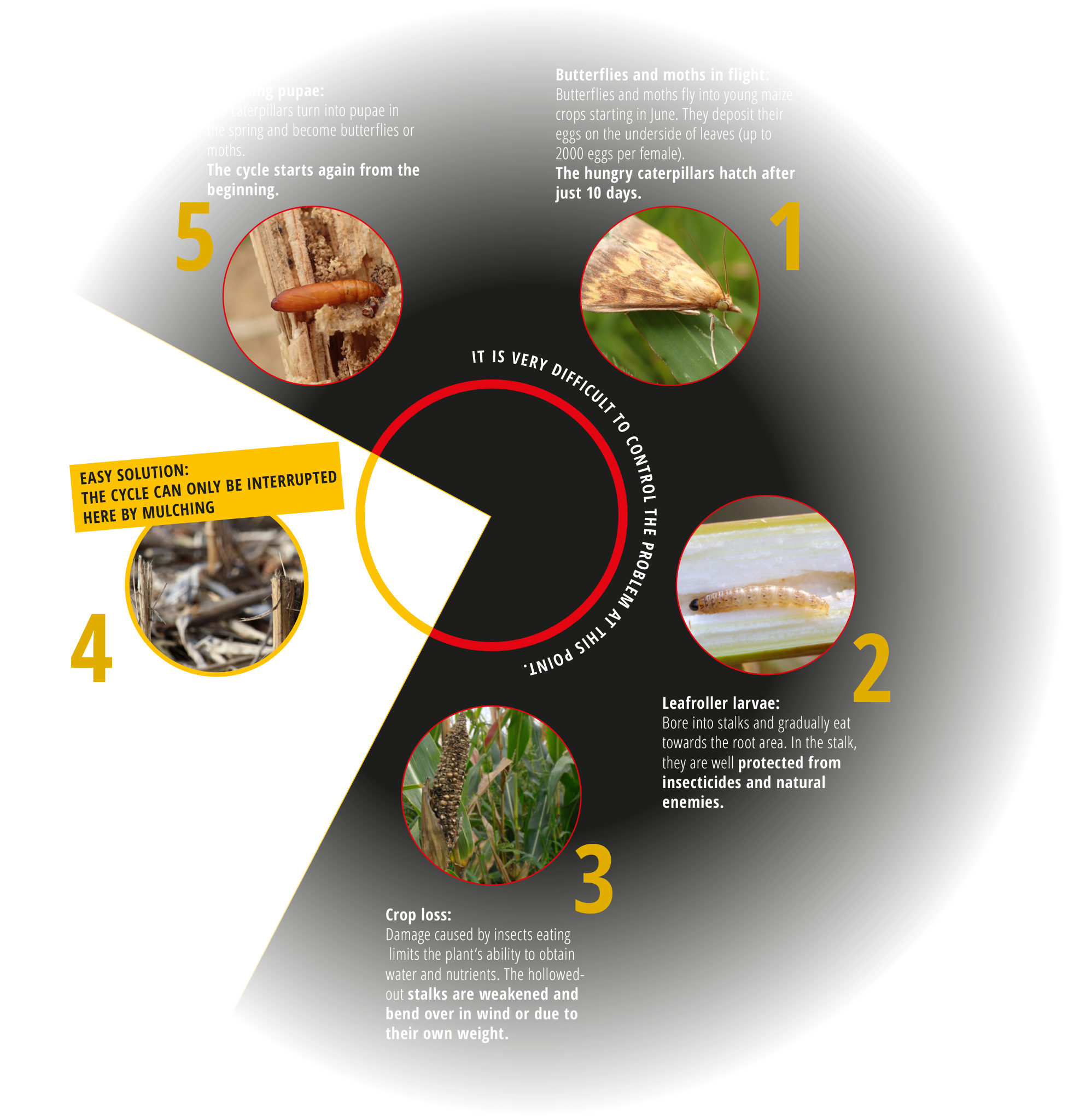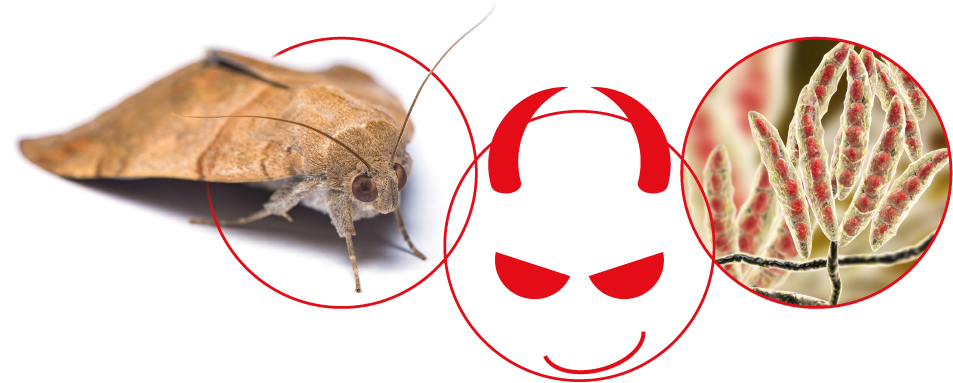“Don’t offer this pest
a place to stay over winter!”

Ostrinie Nubilalis – European corn borer
- Pest
- Loves maize stubble
- Gets on well with Fusarium fungi
Worth knowing
The European corn borer is a small butterfly and is one of the biggest pests in maize cultivation in economic terms. That’s because it likes nothing better than maize plants in a maize field, which it sees as a perfect, cosy home. Once the European corn borer has made itself comfortable in the maize plant, it eats its way up to the base of the stalk with relish.
The result: Yield and quality losses due to weakened, bending plants and fungal infestation as a result of plant damage.
On the move
Initially, the corn borer was only a problem in southern Germany. However, with increased maize cultivation in central and northern Germany, its imaginary “damage line” is shifting further and further north. It can now become an annoying problem for farmers throughout Germany.
Life cycle of the European corn borer


A DIABOLICAL DUO: CORN BORER AND FUSARIUM FUNGI
Fungi, or more precisely Fusarium fungi, are particularly fond of nesting in the feeding marks left behind by the European corn borer. The pathogens get inside the maize plant and spread there. They find ideal conditions in the maize stalk and produce fungal toxins, known as mycotoxins. These fungal toxins cause severe quality losses and lead to serious health problems in animals.
3 signs of a corn borer infestation:
- The maize stalks and plants are bent or broken off
- There are bore holes and bore dust in the area of the joints
- There are bore holes and feeding passages in and on the cob
BUT IT CAN BE STOPPED!
This is done by mulching, because the mulcher destroys the remaining maize stubble and thus also the habitat of the European corn borer.
The stalks remaining in the field are shredded. In this way, the European corn borer is completely deprived of protection for its larvae and no longer has the opportunity to stay alive over winter. This has two advantages: The European corn borer population is permanently damaged and there is less damage from European corn borers and Fusarium fungi in the next season.
In other words: Mulching reduces troublesome damage caused by corn borers and Fusarium fungi, allowing the next crop to develop uniformly.
